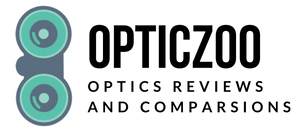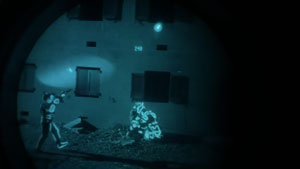
Do you know what night vision is? How about generation? Chances are if you don’t work in the military or law enforcement, you probably don’t know much about night vision.
In this blog post, we will discuss what night vision is, different night vision generation technology, and how each generation works. We will also talk about some of the pros and cons of using night vision technology.
Also, I recommended you to check our night vision binoculars and night vision monoculars guides.
The History of NVDs/ NODs
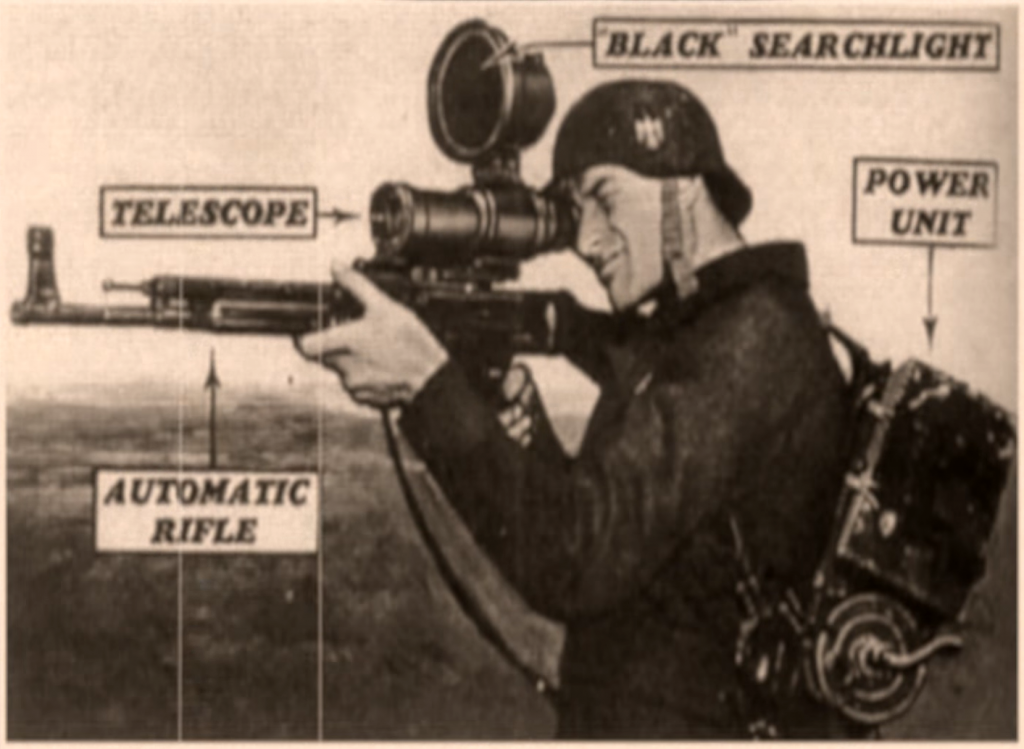
The first-night vision devices (NVDs) were developed in the early 1930s by German and Soviet scientists. These NVDs used a technology called image intensification, which amplifies light to create an image that can be seen in low-light conditions. This technology was later improved upon by the United States during World War II.
Image intensification works by collecting light (including infrared light) with a large lens and then passing it through a tube filled with photocathode material. The photocathode material converts the light into electrons. These electrons are then accelerated and passed through a phosphor screen, which emits photons (light).
[wpsm_box type=”info” float=”none” text_align=”left”]
This process amplifies the available light, allowing the user to see in low-light conditions.
[/wpsm_box]
First Through Generation Five Night Vision Scopes What You Need to Know
There are different generations of night vision technology, each with its advantages and disadvantages.
Generation I

The first generation of night vision devices was developed in the early 1930s and used image intensification tubes. These devices were large and bulky, making them difficult to carry and use for extended periods. Additionally, because they relied on ambient light, they did not work well in completely dark conditions.
Generation II
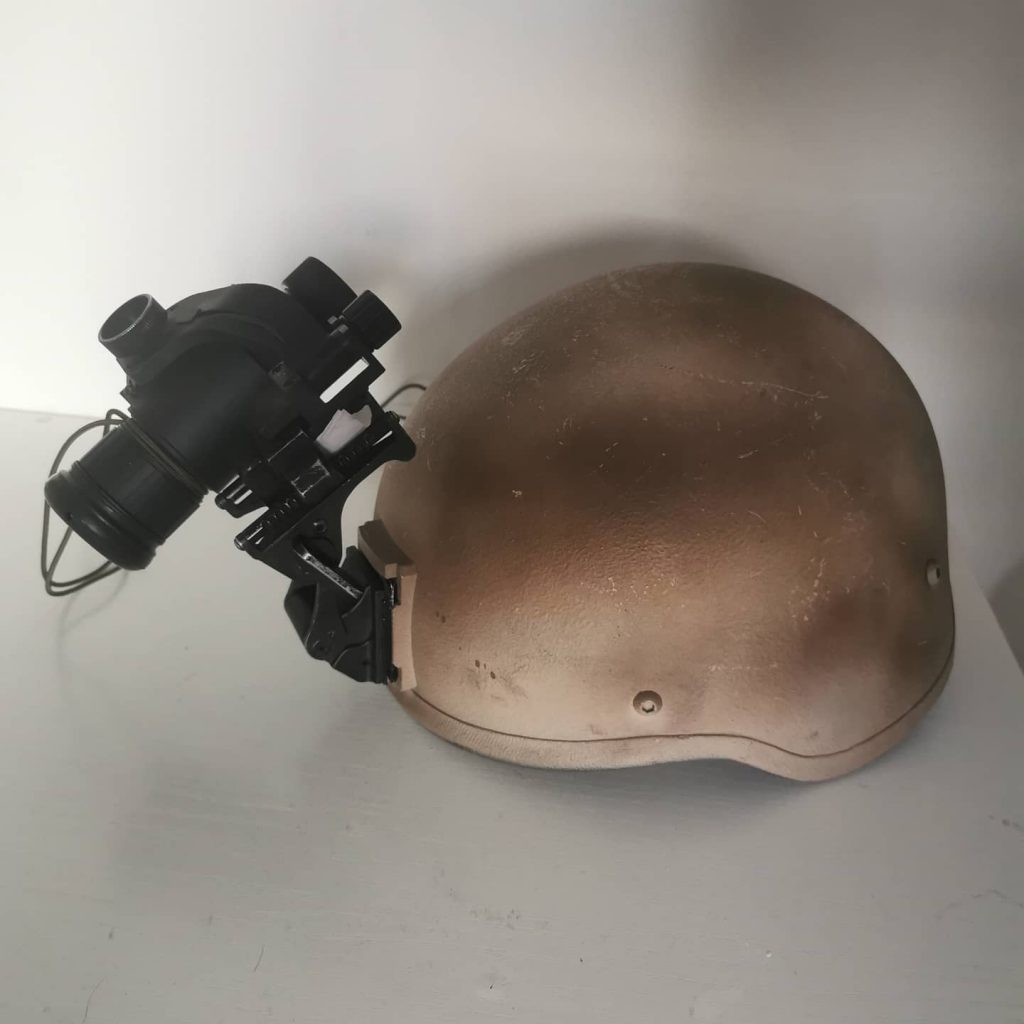
The second generation of night vision devices was developed in the late 1940s and used improved image intensification tubes. These devices were smaller and lighter than Generation I devices, making them easier to carry and use for extended periods. Additionally, they worked better in completely dark conditions than Generation I devices.
Generation III
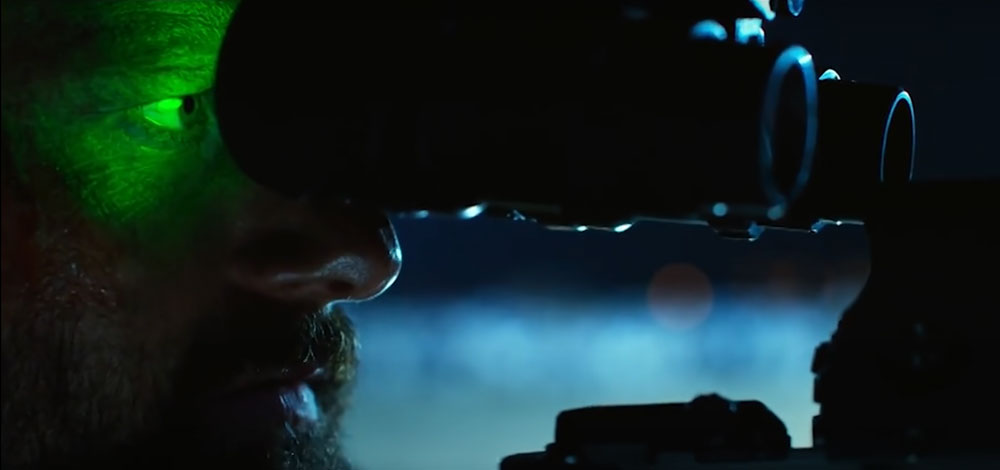
The third generation of night vision devices was developed in the 1970s and used even more improved image intensification tubes. Generation III night vision technology offers several advantages over earlier generations. Highlights include:
- Increased image resolution and clarity
- Reduced image noise for a clearer picture
- Enhanced brightness and contrast for better visibility in low-light conditions
- Automatic brightness control for optimal viewing in any lighting situation
Generation IV
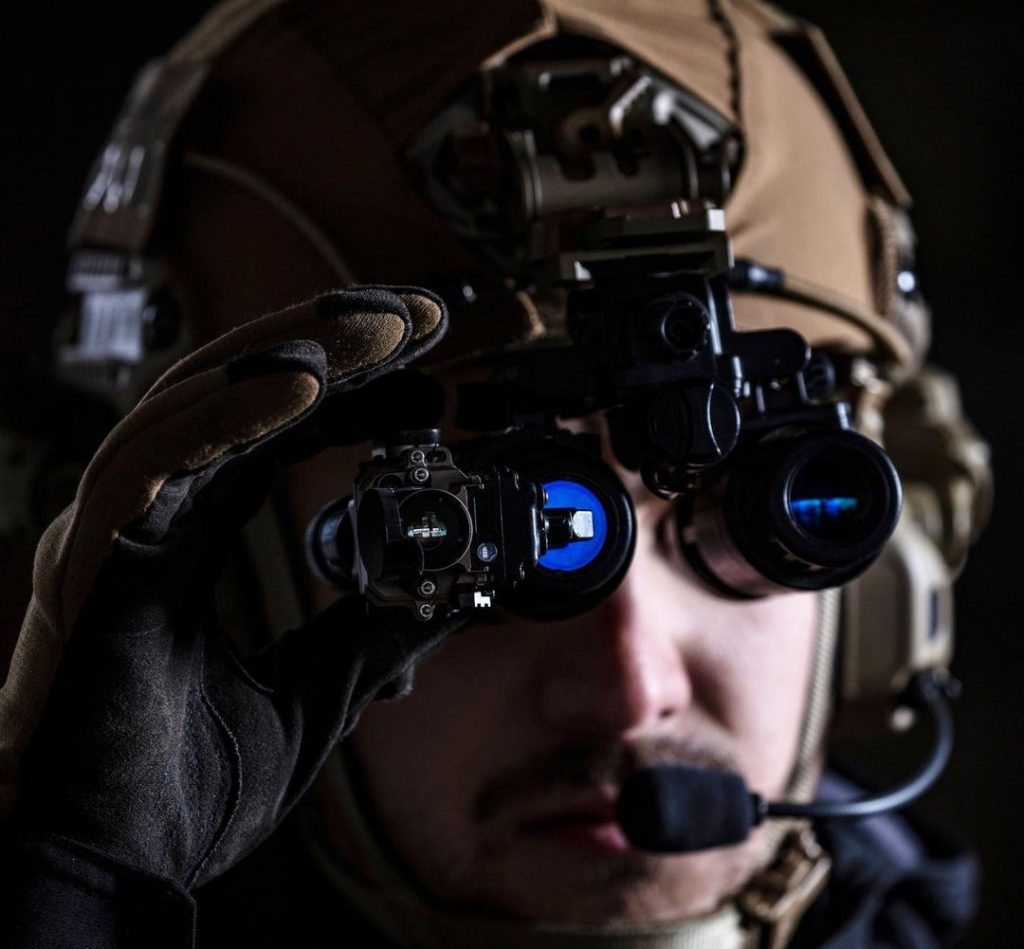
The fourth generation of night vision devices was developed in the 1990s and used improved image intensification tubes as well as infrared imaging sensors. Generation IV of night vision technology is focused on improving the user experience. Some highlighted features include:
- Reduced glare and better contrast for a sharper image
- Automatic brightness adjustment to ensure consistent image quality in different lighting conditions
- User-friendly interface that is easy to operate
Generation V

The fifth and current generation of night vision devices was developed in the 2000s. Generation V is the newest technology when it comes to night vision and offers a variety:
- Longest range
- Highest magnification
- Best image quality
- Most technologically advanced night vision devices
If you are looking for the very best in night vision performance, then Generation V is the right choice for you.
The Battle of the Generations

As the world progresses, each generation brings something new to the table. In terms of night vision, this is no different.
[wpsm_box type=”info” float=”none” text_align=”left”]
Each generation of night vision has its unique capabilities and features that set it apart from the rest.
[/wpsm_box]
So, what exactly are these generations? And how do they differ from one another?
Gen I VS II
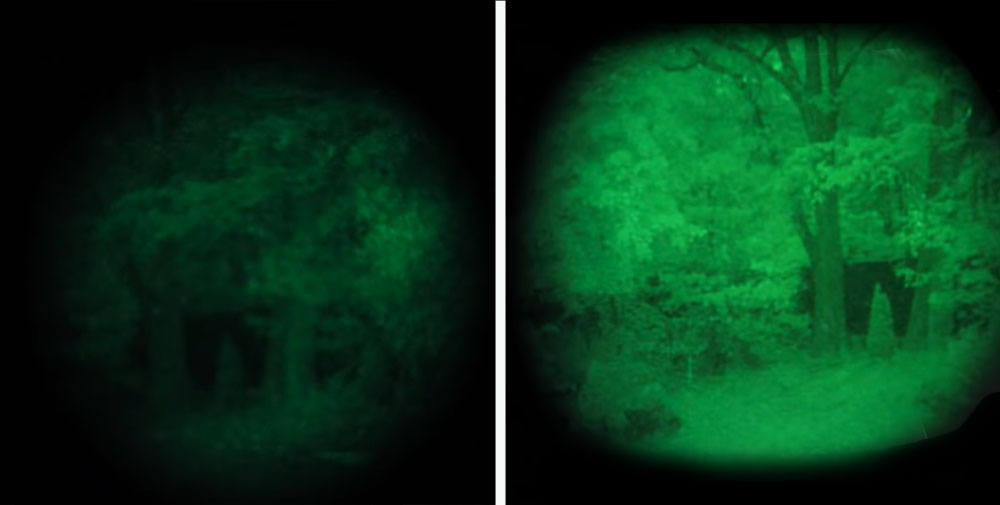
In general, Gen One is less expensive but also less effective than Gen Two. Both technologies use an image intensifier tube to amplify ambient light, but Gen Two devices have a microchannel plate that multiplies the number of photons hitting the photocathode.
This results in a much clearer image for the user. Gen One devices can be used for short-range observation, while Gen Two devices are better suited for long-range observation.
So, if you’re looking for a night vision device for your next hunting trip, you’ll want to invest in a Gen Two device.
However, there are some drawbacks to Gen Two devices.
- One is that they require more power than Gen One devices, so you’ll need to make sure you have fresh batteries before heading out into the field.
- Another drawback is that they are more susceptible to “blooming”, which is when the image is overexposed and washed out.
- You can avoid this by using an IR illuminator, but it’s something to keep in mind if you plan on using a Gen Two device.
Overall, Gen Two devices are the best choice for most people. They offer a clearer image and longer range than Gen One devices, making them ideal for hunting and other outdoor activities. Just be sure to pack some extra batteries and an IR illuminator, just in case.
Gen II VS III
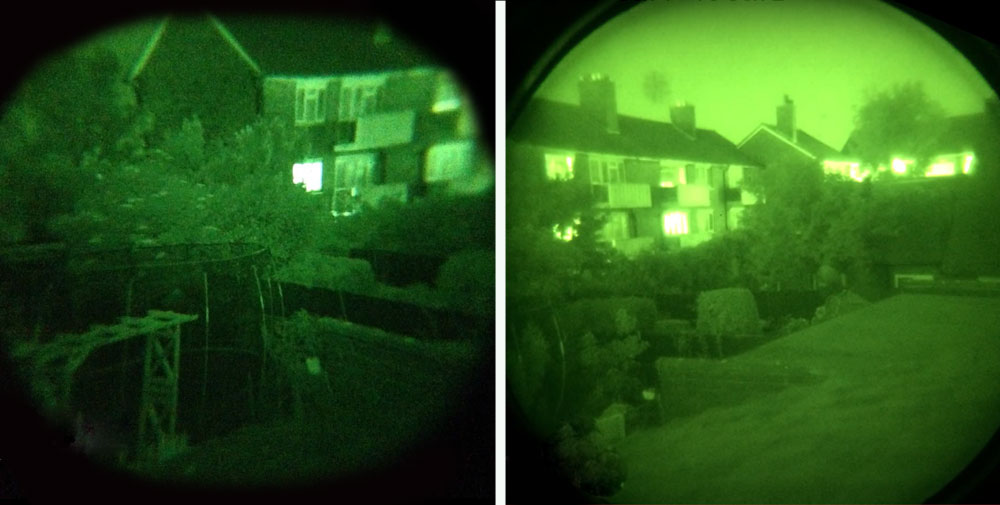
Here’s a quick rundown of the key differences between the two generations:
- Gen Two night vision is significantly cheaper than Gen Three.
- Gen Two night vision devices can be used for shorter periods before they need to be recharged, whereas Gen Three devices can be used for longer.
- Gen Two night vision has a shorter range than Gen Three. This means that it’s not as good for long-range observation.
- Gen Two night vision is more susceptible to light interference than Gen Three. This means that if there’s a bright light source nearby, it can affect your ability to see clearly.
So, which generation is right for you? It depends on your needs and budget.
[wpsm_box type=”info” float=”none” text_align=”left”]
If you need a night vision device that’s going to be used for long-range observation, then Gen Three is the way to go. However, if you’re looking for something that’s more affordable and doesn’t need to be used for extended periods, then Gen Two might be a better option.
[/wpsm_box]
Whichever way you go, just make sure you do your research so you can find the best night vision device for your needs.
Gen III VS IV
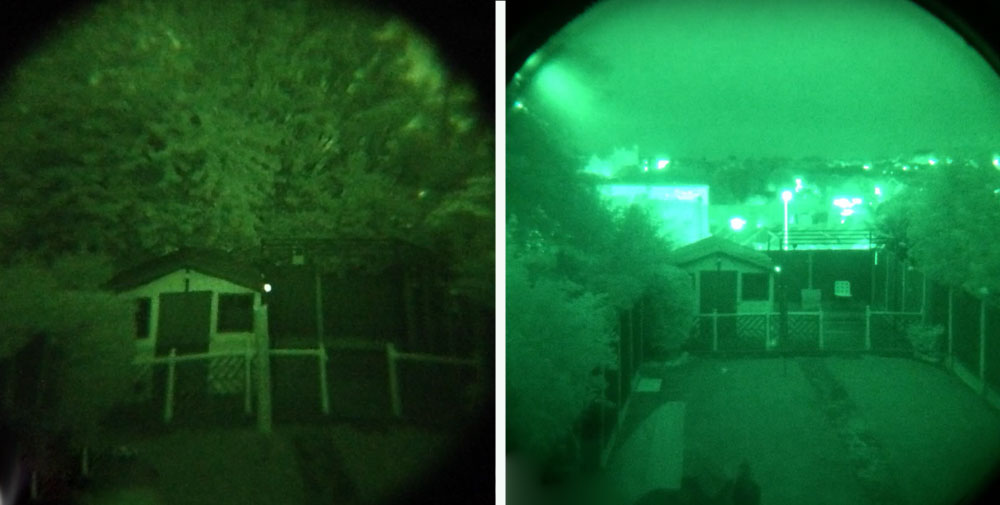
Gen III is the most common type of night vision and is what most people think of when they think of night vision goggles.
Gen IV is a newer technology that is slowly becoming more common. Here’s a quick rundown of the differences between the two:
- Gen III uses an image intensifier tube to amplify light, while gen IV uses a charge-coupled device (CCD) or complementary metal-oxide-semiconductor (CMOS) sensor.
- Gen III has better resolution than gen IV, but gen IV has better low-light performance.
- Gen III is less expensive than gen IV, but gen IV is smaller and more rugged.
So, which one is right for you?
[wpsm_box type=”info” float=”none” text_align=”left”]
If you need the best possible performance, go with gen IV. If you’re on a budget, gen III will probably be just fine. And if you need something small and tough, gen IV is the way to go.
[/wpsm_box]
Whichever night vision generation you choose, make sure to do your research and buy from a reputable source.
Gen IV VS V
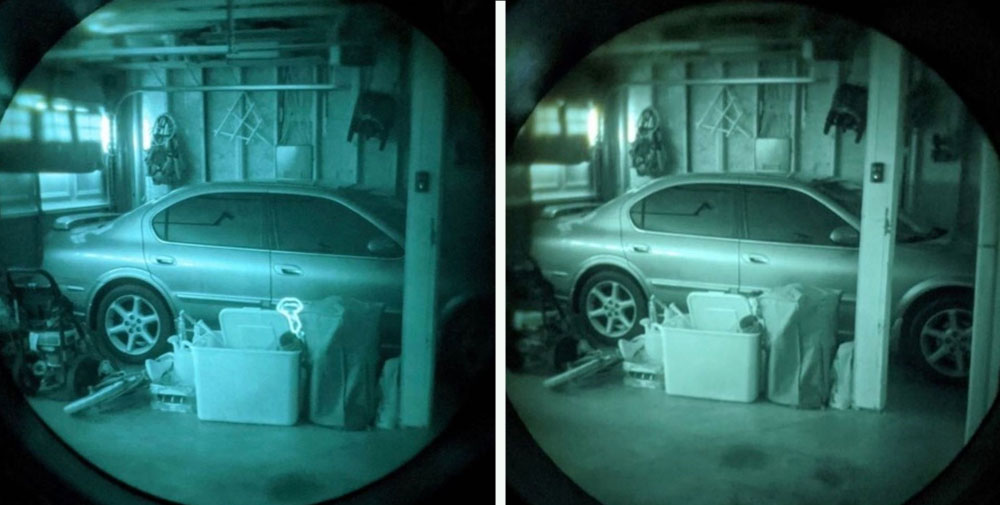
Gen V night vision is much better than Gen IV. Gen V usually has a higher resolution and a wider field of view. It also tends to be more sensitive to light, so you can see in darker environments.
- Generation IV night vision is the most common type. It uses an image intensifier tube to amplify light, making it easier to see in low-light conditions. Generation IV night vision can be used in a variety of settings, from hunting to security.
- Generation V night vision is the newest type on the market. It uses a different technology called thermal imaging, which detects heat instead of light. This makes it ideal for use in complete darkness, as there is no need for any light at all. However, thermal imaging can be more expensive than image intensification (the same technology is also applied in thermal imaging scopes).
So, which night vision generation is right for you? It depends on your needs.
[wpsm_box type=”info” float=”none” text_align=”left”]
If you need to be able to see in complete darkness, then Generation V is the way to go. But if you’re looking for a more affordable option that can still be used in low-light conditions, then Generation IV is a good choice.
[/wpsm_box]
White Phosphor Technology (WPT)
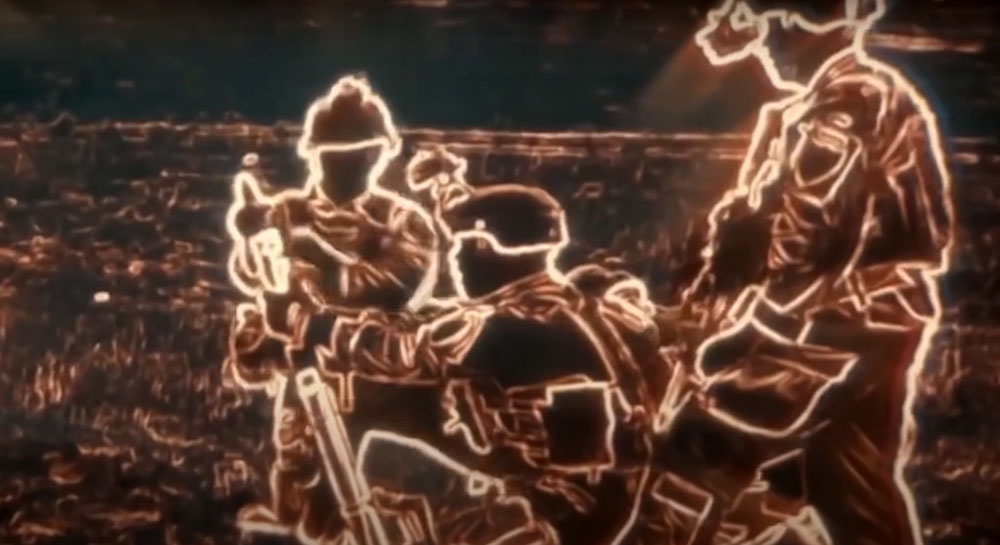
WPT is a cutting-edge night vision technology that offers several advantages over traditional green phosphor tubes. These include:
- improved resolution,
- reduced “blooming” of bright lights,
- the ability to see in a wider range of light conditions.
WPT is also less taxing on the eyes, making it ideal for extended use.
[wpsm_box type=”info” float=”none” text_align=”left”]
If you’re looking for the best possible night vision experience, WPT is the way to go. However, it should be noted that this technology comes at a premium price point.
[/wpsm_box]
But if you’re serious about your night vision needs, WPT is worth the investment. What do you think about WPT? Let us know in the comments below!
Important factors to consider when purchasing night vision goggles.

- One important factor to consider when purchasing night vision goggles is the level of magnification you need. If you plan on using your device for long-range viewing, then you’ll need a higher-powered model that can provide up to 20x magnification.
- However, if you only need to use your night vision goggles for short-range viewing, then a lower-powered model with less magnification will suffice.
- Another factor to consider is the size and weight of the device. If you plan on carrying your night vision goggles around with you, then it’s important to choose a lightweight model that won’t weigh you down.
- Finally, think about what type of power source you prefer. Some night vision goggles run on batteries, while others come with a built-in solar panel that can be used to recharge the device.
Conclusion
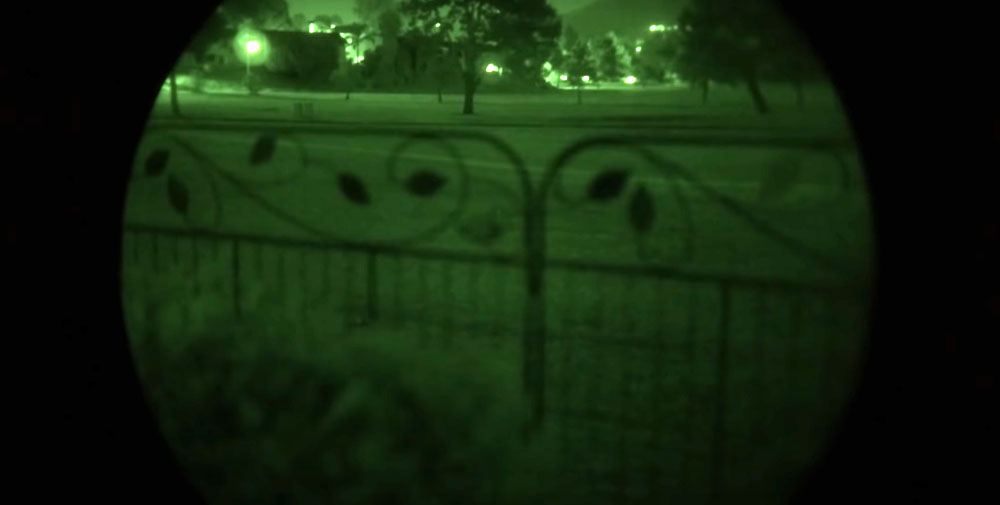
Overall, night vision is an incredible technology that has a wide range of applications. Whether you’re looking to improve your hunting skills, keep an eye on your property at night, or simply want to feel more secure when walking around in the dark, a good pair of night vision goggles can be a valuable asset.
However, it’s important to do your research before making a purchase, as there are many different factors to consider. With this guide in hand, you should be well on your way to finding the perfect night vision device for your needs.
We hope this article has helped you better understand night vision generations and what each one has to offer. As always, feel free to contact us with any questions or comments.
If you found this article helpful, please share it with others who might benefit from it as well. And if you have any questions or comments about night vision generation, feel free to leave them below. Thanks for reading! Until next time!

